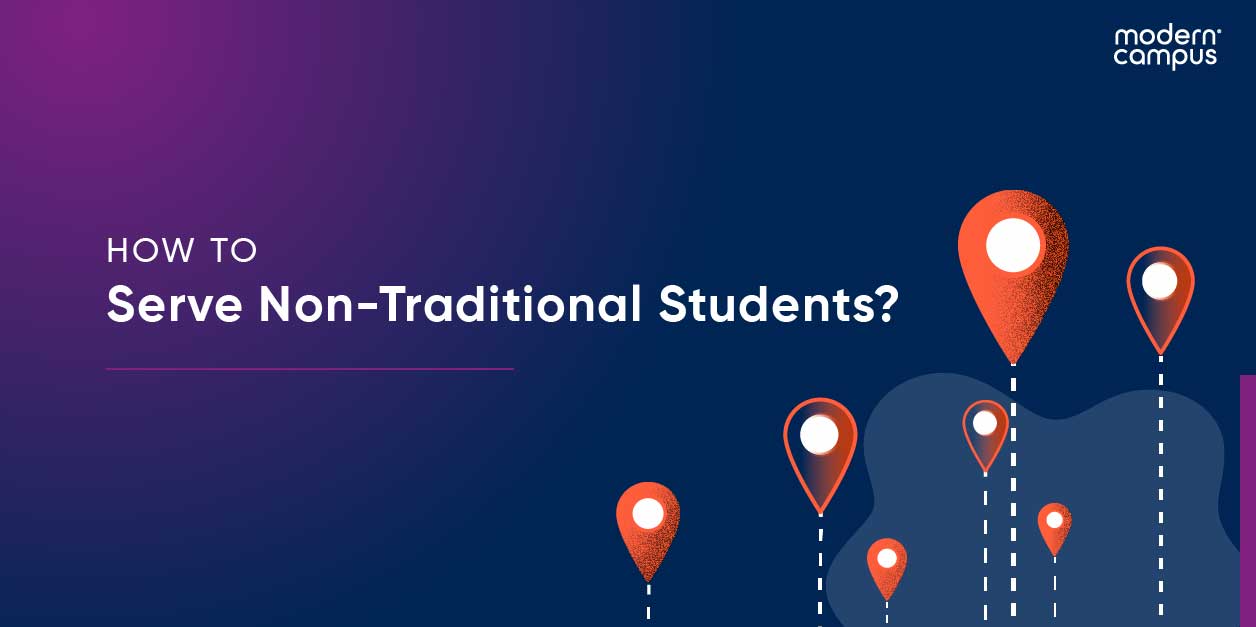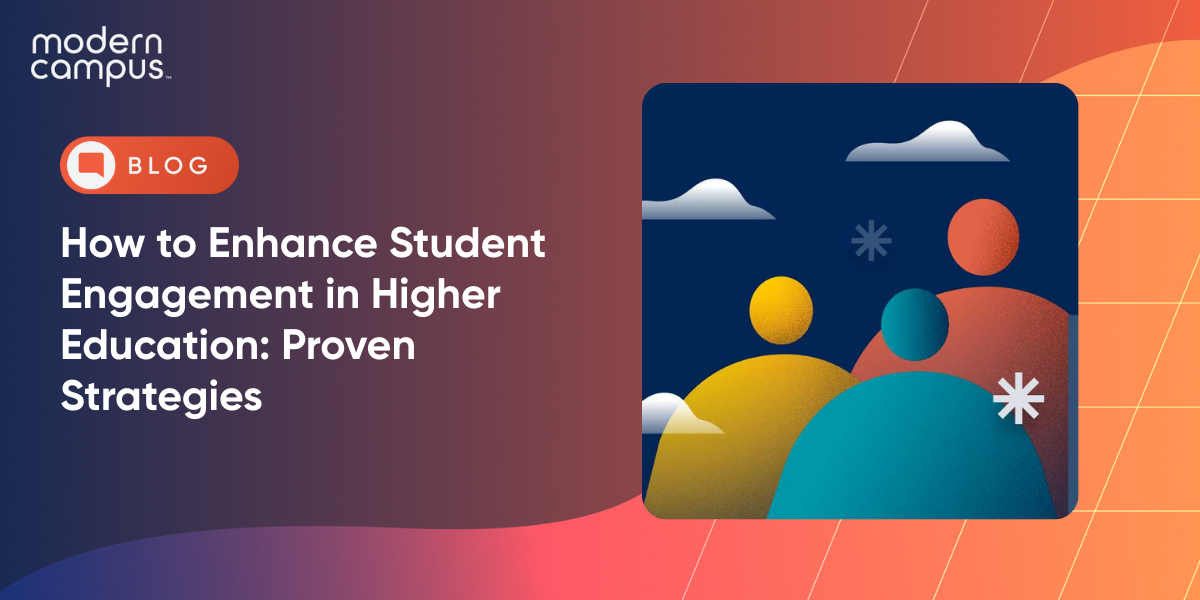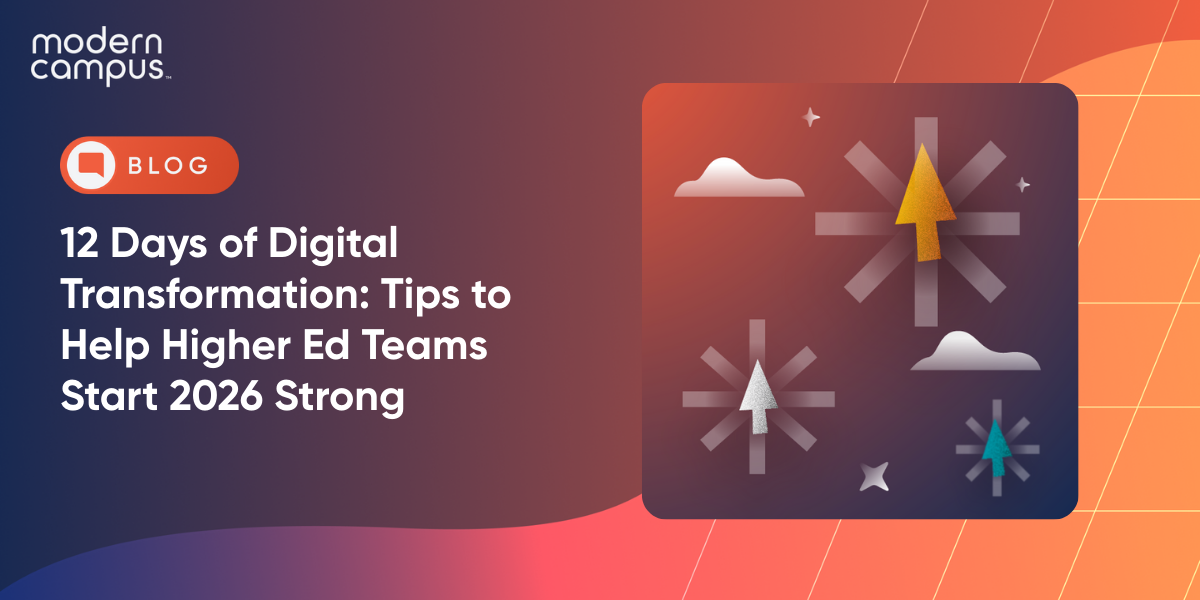Empowering Non-Traditional Students: Strategies for Higher Ed
After enduring several challenging years of enrollment decline, the downward trend has served as a wake-up call for colleges, with many switching up their strategies to bring in students.
Recent reports indicate a 1.2 percent increase in undergraduate enrollments for fall 2023 compared to previous years, however, there's still a long way to go to reach pre-pandemic enrollment rates, and engaging with non-traditional students may be the key to fast-tracking progress.
This declining trend could be a wake-up call for colleges. Adults and employers are clamoring for workforce-ready candidates, and too many schools are showing up empty-handed. The reliance on a century-old education model is robbing all involved of jobs, employers, and enrollments.
Colleges need to start focusing on marketing to non-traditional students.
What is a Non-Traditional Student?
People aren’t staying in one job for 20+ years as they used to. And if they are, they will want to upskill to advance their standing in the company. Employers are calling for regular upskilling and reskilling as well.
These individuals are known as non-traditional students, people beyond 18 - 22-year-olds looking for shorter-term educational offerings with opportunities to gain other credentials that may lead to a degree. They want to be able to get the skills they need on their own schedule (i.e. part-time) without committing to a two or four-year degree.
Traditional Vs Non-Traditional Student
Each bringing their own unique stories and aspirations, traditional and non-traditional students make up the fabric of the campus experience. Traditional students, fresh from high school, embark on their academic journey with a familiar routine of classes and campus activities. In contrast, non-traditional student examples defy convention, spanning a wide spectrum from working professionals seeking a career change to parents returning to fulfill their educational dreams. Recent non-traditional student statistics underscore a growing trend in their enrollment, highlighting their resilience and determination to pursue education amidst life's challenges.
How to Recruit Non-Traditional Students?
To turn things around, colleges need to create onramps for adult learners: Alternative credentials (or microcredentials), digital badges, verified certificates, bootcamps…these are the paths to success in the 21st-century labor market.
Most Americans prefer non-degree education to the traditional college route. In many fields, upskilling is a necessity to hold down a job. Steven Murphy, President and Vice-Chancellor at Ontario Tech University, explained the appeal of alternative credentials in an interview with The EvoLLLution.
“The power of microcredentials lies in being able to offer the same skill to current students and non-traditional learners, as microcredentials can be stacked toward higher-level learning goals,” Murphy said.
The flexibility of these programs makes them attractive to adult learners, who have jobs and schedules of their own to consider.
“We don’t need to be shackled by the academic calendar, the 13-week semester, or other disincentives to individuals looking for just-in-time certifications based on their own schedule,” he added.
Why Should you Recruit Non-Traditional Students?
If you take care of your learners, they’ll take care of you. The modern student lifecycle is one of lifelong learning, which means you and your learners will get the most mileage out of your relationship if it isn’t restricted to their late teens and early twenties.
Today’s student isn’t looking at retirement at age 50, either—most of them will continue working well past that point, which makes it essential for colleges to drop the transactional approach in favor of a long-term one.
Melissa Marcello, Associate Vice President of Champlain Online at Champlain College, told the EvoLLLution in an interview that colleges better support their students when they recognize that learning doesn't end with the completion of one program.
“A career-focused approach to education positions students to become lifelong learners, recognizing that the degree they’re earning is one piece of the puzzle needed to result in a happy and successful career,” Marcello said.
A college that targets adults as much as it does traditional learners is more likely to be the institution of choice when that learner wants to move forward in their career.
Challenges faced by non-traditional students
Colleges and universities of all sizes are increasingly relying on their continuing, professional, online, and workforce education units to drive enrollment and revenue growth when it comes to non-traditional learning. But managing a lifelong relationship with your learners is nearly impossible if you’re not delivering the experience they expect.
Being a non-traditional student isn’t easy. With already full lives and working full time, for many, committing to higher education can be a daunting and costly task. But it doesn't have to be. Ensuring the process of getting students enrolled needs to be as seamless as their Amazon experience. It is crucial to offer them a smooth application process.
Here are four challenges non-traditional students could be facing at your institution:
1. Payment Processes Are Difficult
Many CE divisions struggle to offer a modern payment and enrollment infrastructure.
Across the country, there are CE units of all sizes taking payment by phone and accepting checks. There are more still who ask students to print out enrollment forms and fax them in. In the 21st century!!
A modern business needs modern payment solutions, including allowing students to register and pay online with their credit cards.
Not only is it the experience students expect, but it’s also compliant with basic security standards!
2. Issuing Refunds is a Struggle
Related to the above point, if payments aren’t being processed in a standard way… refunds are going to be difficult to process too.
The expectation of a modern consumer is that when they request a refund, it’s processed immediately. But for schools with inconsistent payment standards, it’s extremely difficult to issue those refunds—leading to a bad consumer experience and minimizing their likelihood to return in the future.
3. It’s Difficult for Learners to Change or Drop Courses
Life circumstances for non-traditional students can change in the blink of an eye. Understandably, learners expect to be able to log into a back-end portal to easily manage their course load.
But many CE divisions have processes in place that make this very difficult. Students have to call into the office and frequently have to get physical forms signed in order to process course drops and changes.
It doesn't have to be this way!
4. Communication with Learners is Stuck in 1999
Even though 65% of emails are ignored, most CE divisions rely on email almost exclusively to communicate with their students.
This isn’t student-centric, and generally speaking, it’s not even best practice… but it’s the only tool available. Introducing SMS text messaging can make a massive difference in improving strategic communication with learners.
How to Meet the Needs of Non-Traditional Learners?
Adult students are changing the playing field of higher education, bringing a whole new set of expectations to the forefront. In order for institutions to attract and retain these students in the long run, administrators must begin to adapt their services to support this new breed of students.
Here are four avenues institutions should explore to effectively meet the needs of their non-traditional learners:
1. Scheduling and Delivery Format
"Class availability and scheduling is one key obstacle for adults who want to continue their education. When morning and afternoon classes are ruled out, often, there is not much choice left."
– Asta Turner, Student, Pfeiffer University
Non-traditional students don’t have the same flexibility in their schedules as their traditional-aged peers. Most hold day jobs and live off campus. Many have dependents. For institutions, this means that everything from course scheduling to office hours needs to be configured with the adult student in mind.
Leading institutions are using technology to extend their reach so that students can do everything from learning from and communicating with professors to ordering transcripts or paying fees on their own schedule and often from their own homes.
While it is important for institutions to provide online delivery options that work with the schedules of non-traditional learners, they must ensure that quality is not affected and that students receive the same level of service as they would on campus.
2. Flexible Approaches to Credentialing
"I don’t want to stick around college forever. I was in the Navy for six years, and I want to get back into the job market… I wish it was more streamlined, that there was better transition from the credits from the Navy to higher education."
- Nathan Sable, Student, The George Washington University
The primary purpose of most adult learners when returning to the classroom is to gain new skills and relevant credentials that will help them succeed in the workforce. It is, therefore, imperative that institutions implement more flexible models of credentialing so that students can complete their education and begin putting it to use as effectively as possible.
Institutions should consider greater acceptance of prior learning or transfer credits as well as short-term programs that give students precise skills they can use in the workplace. Many schools offer thriving certificate programs that give working adults a means of gaining a useful set of skills, as well as a credential, without having to go through the entire degree process.
3. Dedicated Support
"Consideration of what customer service looks like for certain student populations is really an important part of what customers and students expect. If an institution doesn't understand and cannot relate directly to the types of students they have, it will be very difficult for them to be able to succeed in an economy that will be driven more by the customer than by the government."
– Becky Takeda-Tinker, resident, Colorado State University – Global Campus
Adult learners require a more personalized learner experience than students who are freshly out of high school. Institutions trying to gain footage in this marketplace must have a dedicated and knowledgeable team on hand to deal with these specific needs.
As non-traditional students continue to demand a high level of service from their institutions, institutions must rethink how they offer service to adult students. Behind-the-scenes administrative processes and front-line support need to be reformatted to ensure institutions provide non-traditional students with customer service that exceeds their expectations.
4. Targeted Marketing
"I found Penn State on my own; it wasn’t like they reached out to me at a career fair or a school fair and [I] heard about their extra activities for adult learners or their programs for adult learners. I think they can probably do a better job at targeting adult learners who are interested in going back to school."
– James Osborn, Student, Penn State University
Traditional marketing efforts typically focus on recruiting students who are applying straight out of high school. These techniques do not appeal to older students who have different needs from their institution.
With the enrollment of non-traditional students becoming an institutional priority, administrators must also target their marketing efforts toward this population and highlight areas that make their institution relevant to adult learners. Not all non-traditional students are looking for the same thing, and it is important to gather data to be sure that the right marketing strategies are aimed at the right students.
Institutions can use a variety of methods to increase non-traditional student enrollment and retention. Once institutions customize their services to the specific needs of adult learners, they stand to succeed in this increasingly competitive market.
Resources to help you modernize your learner experience
Last updated: July 11, 2023




